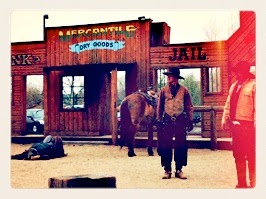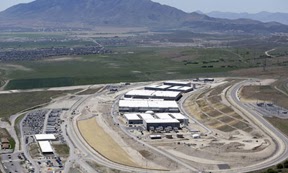Given the number of public relations firms with their feet in social media and digital marketing, one would think more organizations could demonstrate content creation restraint. They don't.
Content creation continues to be the focus of most digital marketing and public relations campaigns and it's starting to backfire. There is so much being produced nowadays that some people are rightly asking how much is too much?
A few seem to think we've already crossed that threshold. Maybe so. The deluge is so huge that the quality of the content doesn't seem to matter as much anymore. The mantra of most programs can be summed up as: Create as much low value content as possible with tightly written link-bait headlines that can be distributed via incessant automation systems in order to inflate website traffic as evidence of causation for unspecified and erroneously labeled key performance indicators.
Sound familiar? It ought too. The vast majority of organizations approach content marking on measurable clicks (a.k.a. actions and conversions) that are overtly and painfully rewarded by online measurement systems. Entire books have been written about it. Frequency breeds familiarly, they say.
Too much frequency also breeds contempt.
The real problem with more and more marketing programs is that content has become akin to being a house guest in someone else's online experience. Worse, this house guest has become so narcessistic that they act like they own the place just because they invested in a shiny new suit.
Sure, an organization might own the space where it publishes, but it doesn't own the stream most people subscribe to. They turned to digital mediums to escape interruption rather than be pummeled by them.
Unless more organizations wake up, it's very likely that the remedy for bad journalism and content shock is more and more of it until it becomes too expensive and ultimately people tune it out. It is an inevitable outcome, which is the same one that once caused direct mail houses to surrender 20 percent conversion rates for less than 2 percent between the 1970s and 2000s. They just sent more mail.
The alternative is to modify the content mix.
 While some organizations are better suited to it than others, modifying content creation with content participation remains one of the most viable solutions. Rather than organizations expressing themselves with content creation, they can invite consumers or small business owners to contribute some of it.
While some organizations are better suited to it than others, modifying content creation with content participation remains one of the most viable solutions. Rather than organizations expressing themselves with content creation, they can invite consumers or small business owners to contribute some of it.
The National Park Foundation, along with several partner agencies, is currently managing one such campaign. Outdoorsmen and amateur photographers provide photos and the foundation supplies the community and distribution.
Last year, nearly 20,000 photos were submitted between May and December. Winning images received cash prizes, outdoor gear, hotel packages, and an annual Federal Recreation Lands Pass.
Sure, Share The Experience is packaged as an annual contest that invites people to explore the nation’s federal lands and share their experiences with photography but it's more than that. While the prizes provide a gratitude-based incentive, they seem secondary to the primary participatory engagement.
At the same time, the photographs submitted by real people demonstrate the benefits of a federal parks program much more effectively than if these partner agencies produced and promoted 54 photographs every day. It's also more cost-effective than attempting to cover some 500 million acres of federal lands with professional photographers and park professionals alone.
Content participation is more structured than a crowdsourced contest.
A few years ago, we conceived a similar approach to developing content for early cause marketing campaigns, independent film releases, and startup social media programs. In essence, as long as the program structure guides participants (as opposed to runaway hashtag efforts, content participation efforts can have a dramatic and positive impact on exciting professional content creation programs.
Just keep in mind that running a "contest" on its own isn't enough. Effective campaigns are designed to place participants and stakeholders on equal footing. And any resulting exposure of a well-executed campaign will likely be a by-product of achieving larger objectives. In this case, it enriches the parks program, safeguards our national heritage, and inspires the next generation of parks enthusiasts.
What about your organization? What can you do to transform the "us and them" vernacular into a more collaborative "we" program? And if it isn't considering participatory efforts online and off, then maybe it's time to see how many counted clicks are destined to become disenfranchised customers or adversaries.
The kayaking photo above was submitted to Share The Experience by Courtney Kotewa. She was in northern Michigan near Essexville when she took the winning shot.
Content creation continues to be the focus of most digital marketing and public relations campaigns and it's starting to backfire. There is so much being produced nowadays that some people are rightly asking how much is too much?
A few seem to think we've already crossed that threshold. Maybe so. The deluge is so huge that the quality of the content doesn't seem to matter as much anymore. The mantra of most programs can be summed up as: Create as much low value content as possible with tightly written link-bait headlines that can be distributed via incessant automation systems in order to inflate website traffic as evidence of causation for unspecified and erroneously labeled key performance indicators.
Sound familiar? It ought too. The vast majority of organizations approach content marking on measurable clicks (a.k.a. actions and conversions) that are overtly and painfully rewarded by online measurement systems. Entire books have been written about it. Frequency breeds familiarly, they say.
Too much frequency also breeds contempt.
The real problem with more and more marketing programs is that content has become akin to being a house guest in someone else's online experience. Worse, this house guest has become so narcessistic that they act like they own the place just because they invested in a shiny new suit.
Sure, an organization might own the space where it publishes, but it doesn't own the stream most people subscribe to. They turned to digital mediums to escape interruption rather than be pummeled by them.
Unless more organizations wake up, it's very likely that the remedy for bad journalism and content shock is more and more of it until it becomes too expensive and ultimately people tune it out. It is an inevitable outcome, which is the same one that once caused direct mail houses to surrender 20 percent conversion rates for less than 2 percent between the 1970s and 2000s. They just sent more mail.
The alternative is to modify the content mix.
 While some organizations are better suited to it than others, modifying content creation with content participation remains one of the most viable solutions. Rather than organizations expressing themselves with content creation, they can invite consumers or small business owners to contribute some of it.
While some organizations are better suited to it than others, modifying content creation with content participation remains one of the most viable solutions. Rather than organizations expressing themselves with content creation, they can invite consumers or small business owners to contribute some of it.The National Park Foundation, along with several partner agencies, is currently managing one such campaign. Outdoorsmen and amateur photographers provide photos and the foundation supplies the community and distribution.
Last year, nearly 20,000 photos were submitted between May and December. Winning images received cash prizes, outdoor gear, hotel packages, and an annual Federal Recreation Lands Pass.
Sure, Share The Experience is packaged as an annual contest that invites people to explore the nation’s federal lands and share their experiences with photography but it's more than that. While the prizes provide a gratitude-based incentive, they seem secondary to the primary participatory engagement.
At the same time, the photographs submitted by real people demonstrate the benefits of a federal parks program much more effectively than if these partner agencies produced and promoted 54 photographs every day. It's also more cost-effective than attempting to cover some 500 million acres of federal lands with professional photographers and park professionals alone.
Content participation is more structured than a crowdsourced contest.
A few years ago, we conceived a similar approach to developing content for early cause marketing campaigns, independent film releases, and startup social media programs. In essence, as long as the program structure guides participants (as opposed to runaway hashtag efforts, content participation efforts can have a dramatic and positive impact on exciting professional content creation programs.
Just keep in mind that running a "contest" on its own isn't enough. Effective campaigns are designed to place participants and stakeholders on equal footing. And any resulting exposure of a well-executed campaign will likely be a by-product of achieving larger objectives. In this case, it enriches the parks program, safeguards our national heritage, and inspires the next generation of parks enthusiasts.
What about your organization? What can you do to transform the "us and them" vernacular into a more collaborative "we" program? And if it isn't considering participatory efforts online and off, then maybe it's time to see how many counted clicks are destined to become disenfranchised customers or adversaries.
The kayaking photo above was submitted to Share The Experience by Courtney Kotewa. She was in northern Michigan near Essexville when she took the winning shot.











































